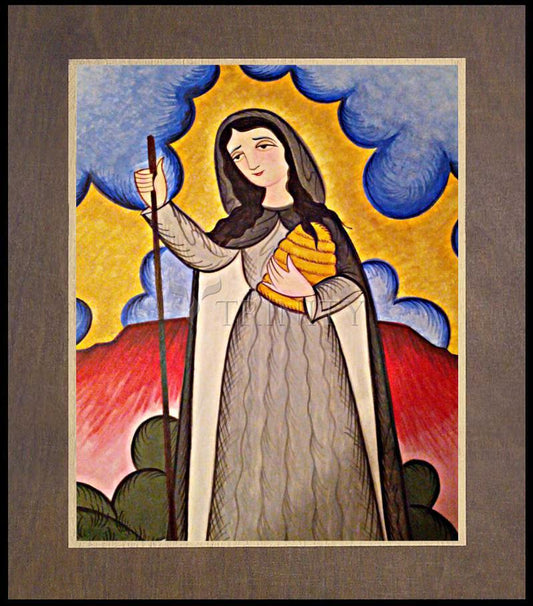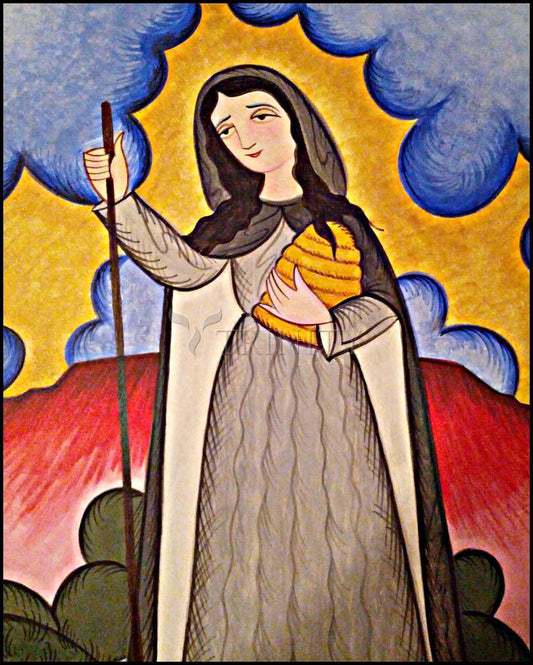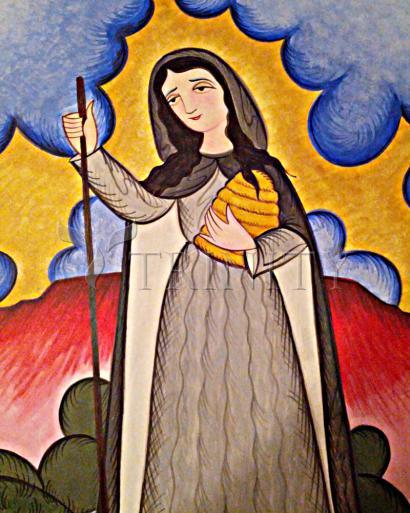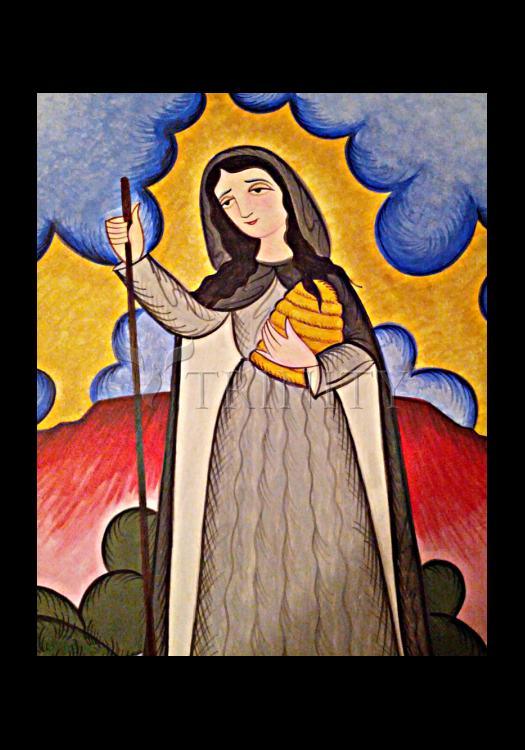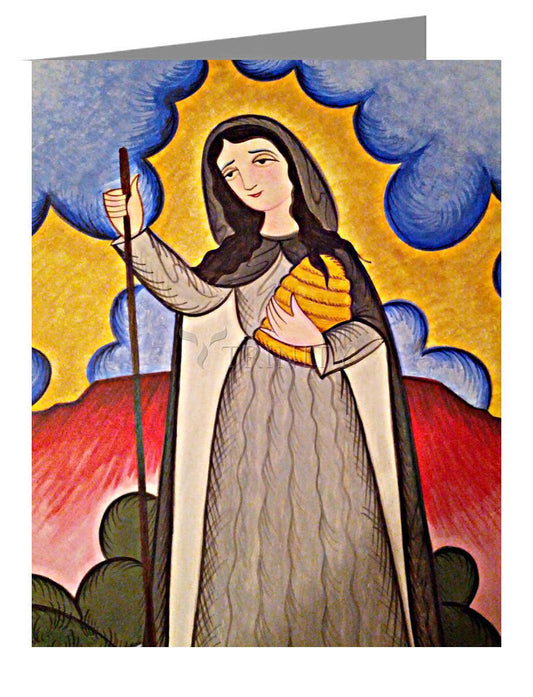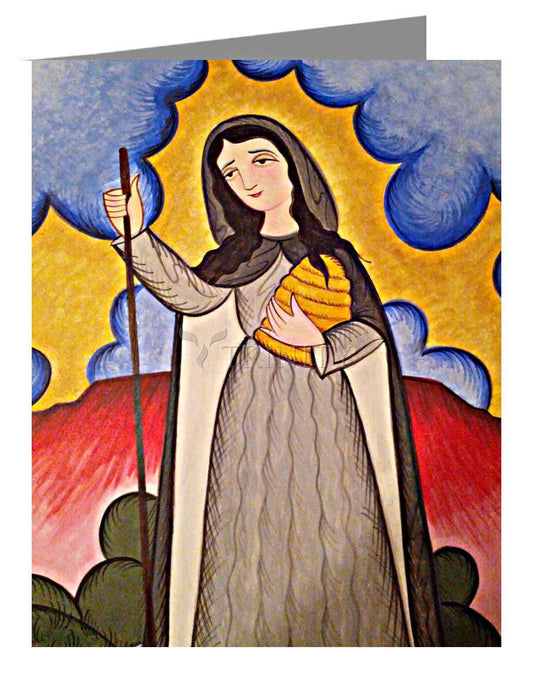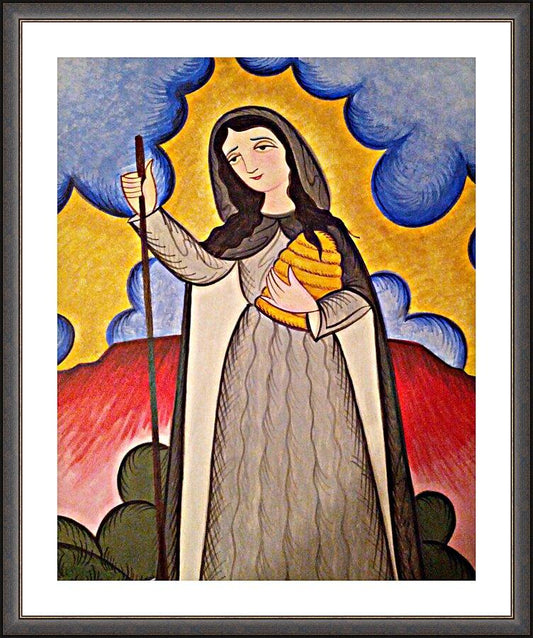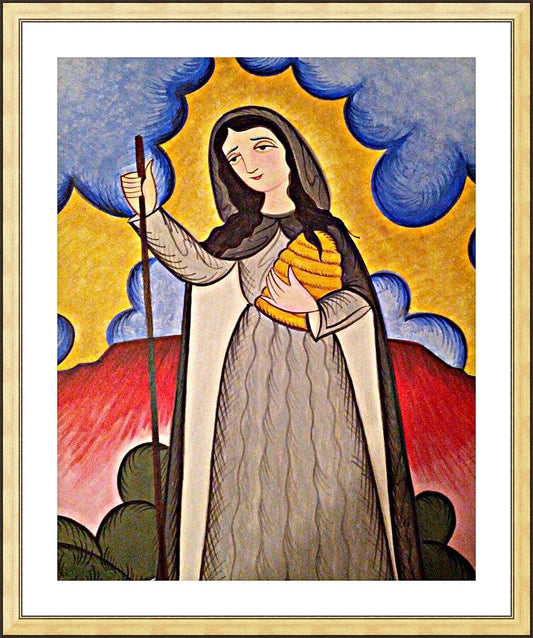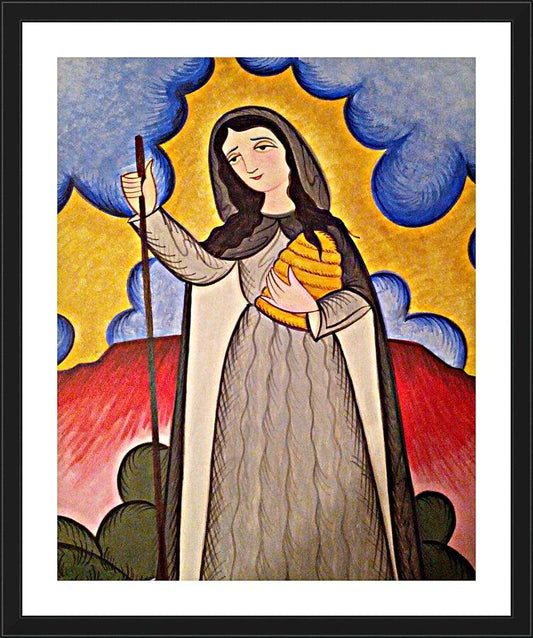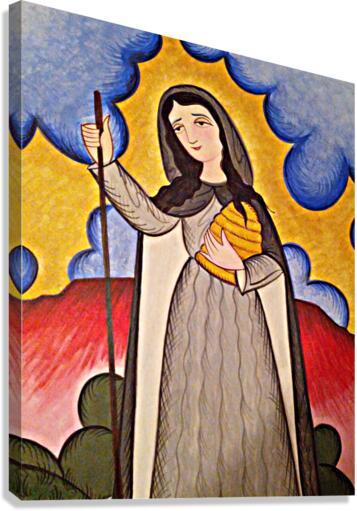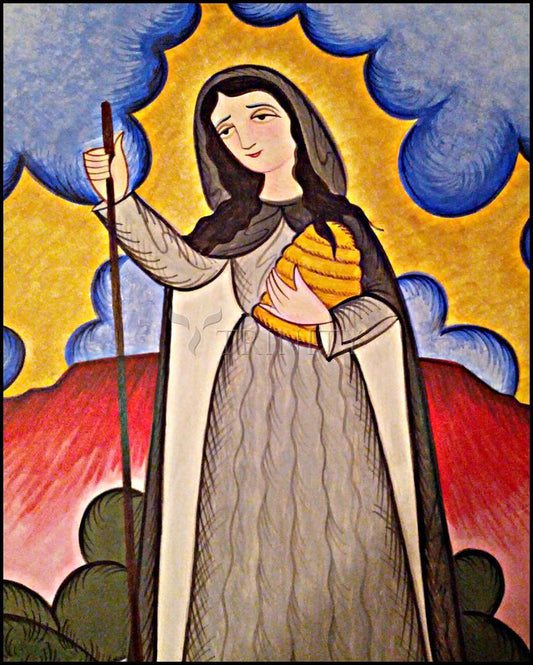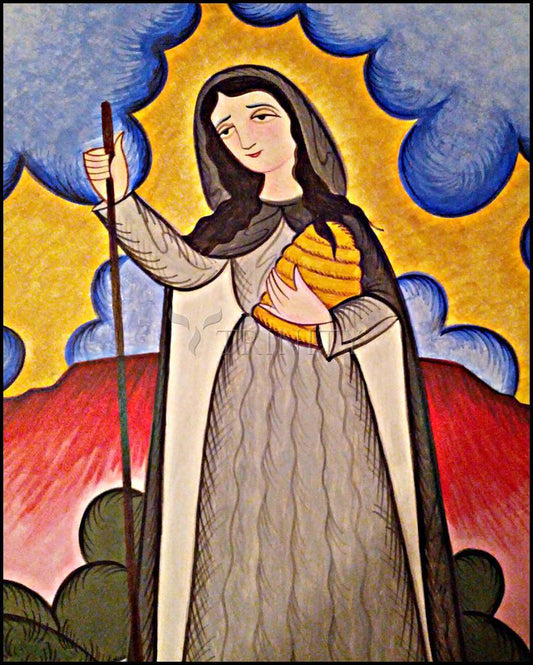ARTIST: Br. Arturo Olivas, OFS
ARTWORK NARRATIVE:
May God bless you,
Holy Saint Gobnait,
And may Mary bless you,
And I bless you myself.
For it is to you that I come,
To plead my case with you,
To request my healing,
From you on God's part.
Her feast day is February 11.
Read More
St. Gobnait is one of the best loved local saints in the areas where her cult is strong, yet she remains relatively unknown in many other places.
However, she is among a group of Irish saints whose feast day has been given national rather than just local recognition.
The main centres of devotion to Gobnait are Inisheer (Aran Islands), Dún Chaoin in West Kerry and Ballyvourney, near the Cork / Kerry border.
There are a number of other places which carry her name " often as Kilgobnet or Cill Ghobnait " near Dungarvan and Milltown, Co Kerry for example and evidence of the saint's cult is also found in the dedications of churches and holy wells in the counties of Cork, Kerry, Limerick and Waterford.
Much of what we know about Gobnait comes from folklore.
Unlike many other Irish saints, Gobnait's life story was not written down during the medieval period. Tradition and links with St Abbán (associated with Ballyvourney) suggests she lived during the 6th century.
A version of the saint's life tells us that Gobnait was born in Co Clare and due to a family feud, fled to the island of Inisheer where she founded a church which still stands on the north side of the island near the shore.
One day an angel appeared to her and told her to head inland and to find the place of her resurrection.
She was told she would know this spot as it would be marked by the presence of 9 white deer.
She travelled south in search of this place and her many stops are marked by churches and holy wells dedicated to her, such as the medieval church at Kilgobnet, Co Waterford.
At various stages of her journey Gobnait met with white deer of varying numbers but it was only when she reached Ballyvourney that she found the nine deer grazing on a rise overlooking the River Sullane and looking towards the Derrynasaggart hills.
This is where she settled, died and was buried "to await her resurrection".
Saint Abbán is said to have worked with her on the foundation of the convent and to have placed Saint Gobnait over it as abbess.
Gobnait's cult thrived and the ruins of a medieval church dedicated to her are still visible today.
Gobnait noted that "resurrection place" where the soul leaves the body and Celtic lore believed that the soul left the body as a bee or a butterfly thus bees were held in high esteem.
So it is not surprising that Gobnait added beekeeping to her life's work developing a lifelong affinity with them.
Typical of the ecclesiastical records of the era, lots of miracle-embellished stories survive where Gobnait and her superhero bees save the day.
One story tells of how she cured one of her sick nuns using her own honey.
And many accounts exist of how Gobnait prevented invaders from carrying off cattle.
One version of the tale has the beehive turning into a bronze helmet and the bees themselves turning into soldiers.
It is said that it was the O'Herlihys who sought her help and that they handed down the bronze helmet from one generation to the next as a great source of protection.
Another version has the beehive turning into a bell which then became Gobnait's bell.
And yet another version tell of how she let loose the bees from her hives and they attacked the invaders.
It is this legend that inspired the Harry Clarke stained glass window in the Honan Chapel at University College Cork.
The beautiful window shows Gobnait dressed in royal blue robes with elaborate designs in turquoise. She wears a silver cloak and a veil.
Her face is surrounded by bees, at her feet she is shown carrying a honeycomb and bees are depicted chasing away the thieves who threaten to rob her church.
Many modern depictions of the saint also associate her with bees such as the statue at her shrine in Ballyvourney, by Séamus Murphy.
As with many great stories, most likely there is a grain of truth lurking in these stories somewhere. St Gobnait was obviously well revered.
Her fondness for bees suggests a calm and gentle character.
She has a considerable fanbase with many people taking part in pilgrimages to her shrine in Ballyvourney, particularly on February 11, at Whitsun, and in July.
Her spirit lives on in apiary circles where she has become quite an icon.
In this age, where bees need all the nurturing they can get, anyone who inspires beekeepers to continue their amazing work has earned sainthood several times over.



